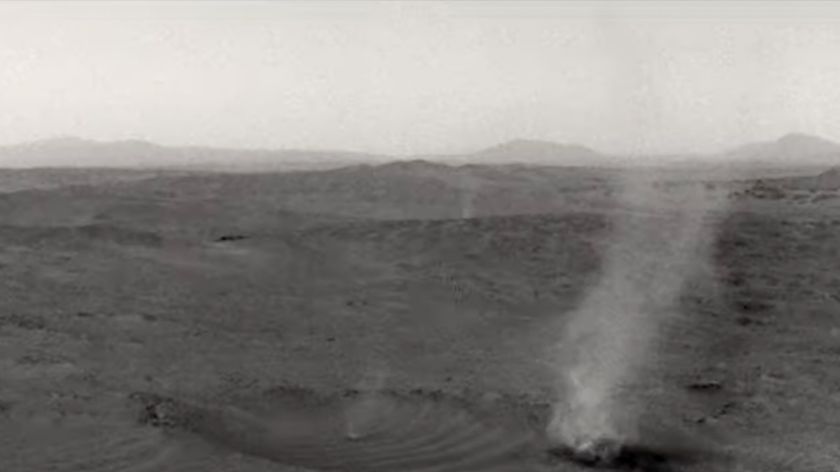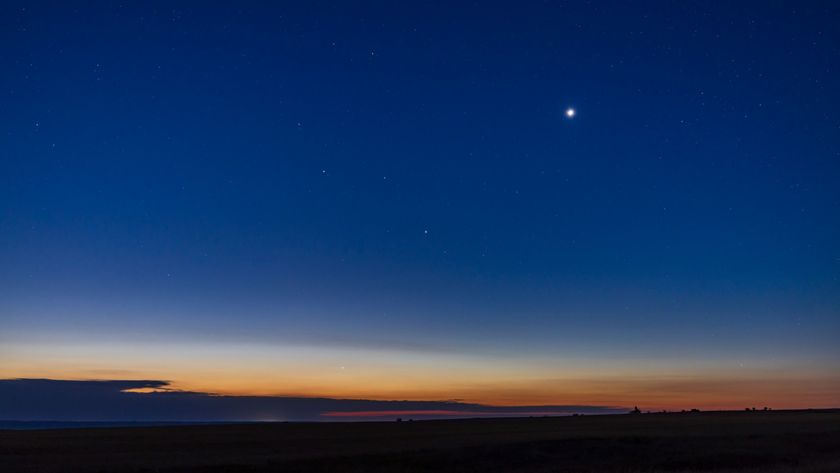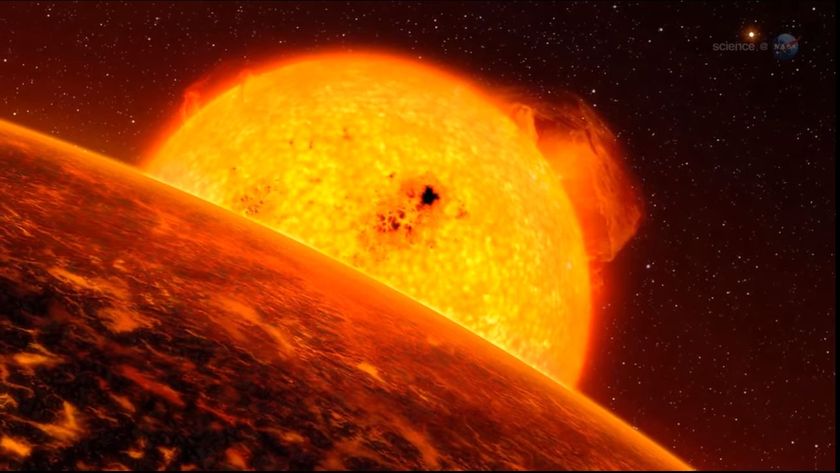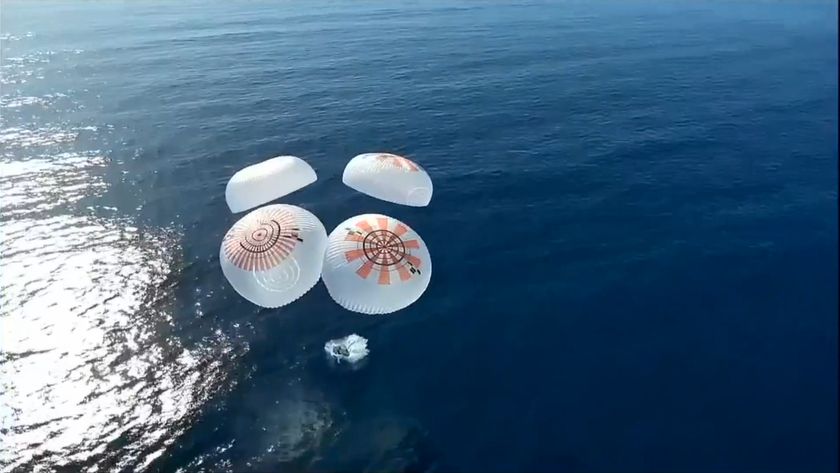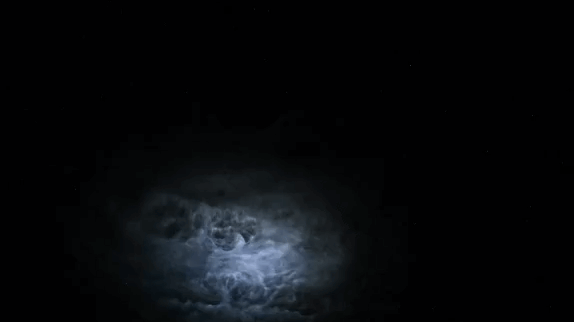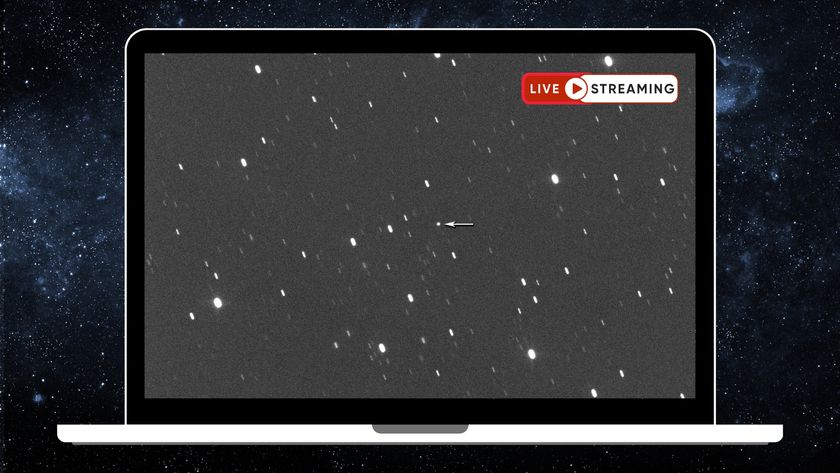World's Largest Digital Camera Begins Hunt for Killer Asteroids
A new telescope in Hawaii being billed as the world'slargest digital camera has begun searching the sky for potentially killerasteroids that could endanger our planet Earth.
With a main mirror about 60 inches (1.8 meters) wide, thenew telescope on Maui's Haleakala volcano peak is somewhat small when comparedto the large 10-meter Keck telescopes atop the Hawaiian peak of Mauna Kea.
But the telescope's 1,400-megapixel camera is a digitalgiant, with 1.4 billion pixels spread across 40 centimeters to snap photos ofthe night sky automatically, night after night, to find potentiallydangerous asteroids. A typical domestic digital camera may have 5million pixels on a chip a few millimeters across, telescope officials said.
?Althoughmodest in size, this telescope is on the cutting edge of technology,? saidastronomer Nick Kaiser, who is leading the asteroid hunt, known as thePanoramic Survey Telescope & Rapid Response System (Pan-STARRS). ?It canimage a patch of sky about 40 times the area of the full moon, much larger thanany similar-sized telescope on Earth or in space.?
The asteroid hunt actually began on May 13, when the newPan-STARRS telescope PS1 started its space rock survey. That was when "theworld became a slightly safer place," project officials said in astatement this week. [Moreasteroid photos.]
Now, the new telescope has been turned over to the PS1Science Consortium, an international group of 10 institutions across the UnitedStates, Germany, Taiwan and the United Kingdom. The consortium includes theUniversity of Hawaii at Manoa, which built the Pan-STARRS telescope.
The telescope is prototype for the more ambitious P4observatory, a telescope that would be four times more powerful than P1 and sitatop Hawaii's Mauna Kea. As it is, P1 is expected to map about 75 percent ofthe night sky during its initial asteroidsearch.
Get the Space.com Newsletter
Breaking space news, the latest updates on rocket launches, skywatching events and more!
Over the next three years, the new telescope is expectedto find 100,000 asteroids and determine which, if any, pose a collision threatto Earth, researchers said. The observatory should also catalogue about fivebillion stars and 500 million galaxies, they added.
The new telescope is designed to take more than 500photos of the sky every night and send 4 terabytes of data (the equivalent of1,000 DVDs) to the Maui High Performance Computing Center for analysis. Thecomputing center will compare the images with each other and older observationsto find any objects that have moved or changed in brightness, Pan-STARRSresearchers said.
Astronomers also hope to use the telescope to find browndwarfs, distant quasars and powerful supernova explosions in distant galaxies.
Of the many asteroids that fly in the region of spacearound Earth, only about 85 percent of the largest ones have been found,according to a recent report from the National Academy of Sciences. About 15percent of asteroids about 460 feet (140 meters) wide ? which could causewidespread local devastation if they hit Earth ? have been tracked, the reportstated.
NASA routinely tracks asteroids and comets that fly nearEarth using a network of ground and space telescopes as part of its Near-EarthObject Observations program, though the National Academy of Sciences reportfound that more funding is needed for the space agency to meet its asteroidthreat census goals.
President Barack Obama has proposed a budget boostfor NASA's asteroid-tracking program that would increase funding from $3.7million in 2009 to $20.3 million in 2011. Obama has also proposed sendingastronauts to visit an asteroid by 2025 to gatherdata that could help astronomers find ways to deflect space rocks before theythreaten Earth and its inhabitants.
- Images - Asteroids UpClose
- 5 Reasons to CareAbout Asteroids
- Potentially DangerousAsteroid Spotted Passing Earth
Join our Space Forums to keep talking space on the latest missions, night sky and more! And if you have a news tip, correction or comment, let us know at: community@space.com.

Tariq is the Editor-in-Chief of Space.com and joined the team in 2001, first as an intern and staff writer, and later as an editor. He covers human spaceflight, exploration and space science, as well as skywatching and entertainment. He became Space.com's Managing Editor in 2009 and Editor-in-Chief in 2019. Before joining Space.com, Tariq was a staff reporter for The Los Angeles Times covering education and city beats in La Habra, Fullerton and Huntington Beach. In October 2022, Tariq received the Harry Kolcum Award for excellence in space reporting from the National Space Club Florida Committee. He is also an Eagle Scout (yes, he has the Space Exploration merit badge) and went to Space Camp four times as a kid and a fifth time as an adult. He has journalism degrees from the University of Southern California and New York University. You can find Tariq at Space.com and as the co-host to the This Week In Space podcast with space historian Rod Pyle on the TWiT network. To see his latest project, you can follow Tariq on Twitter @tariqjmalik.



